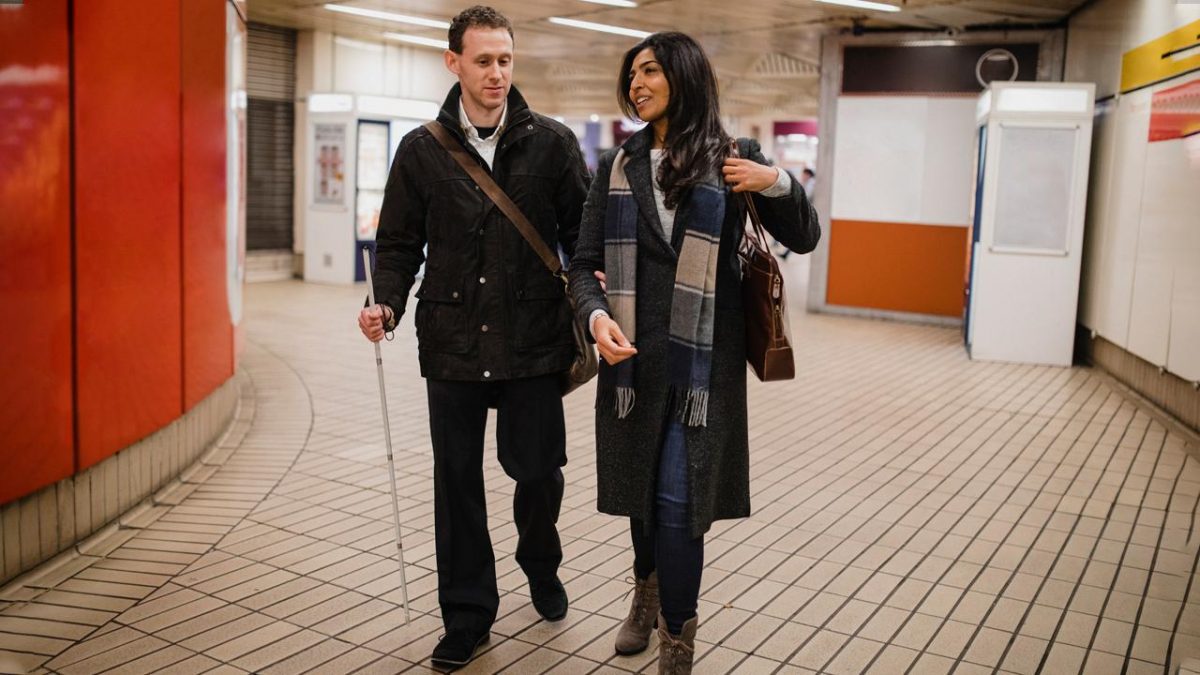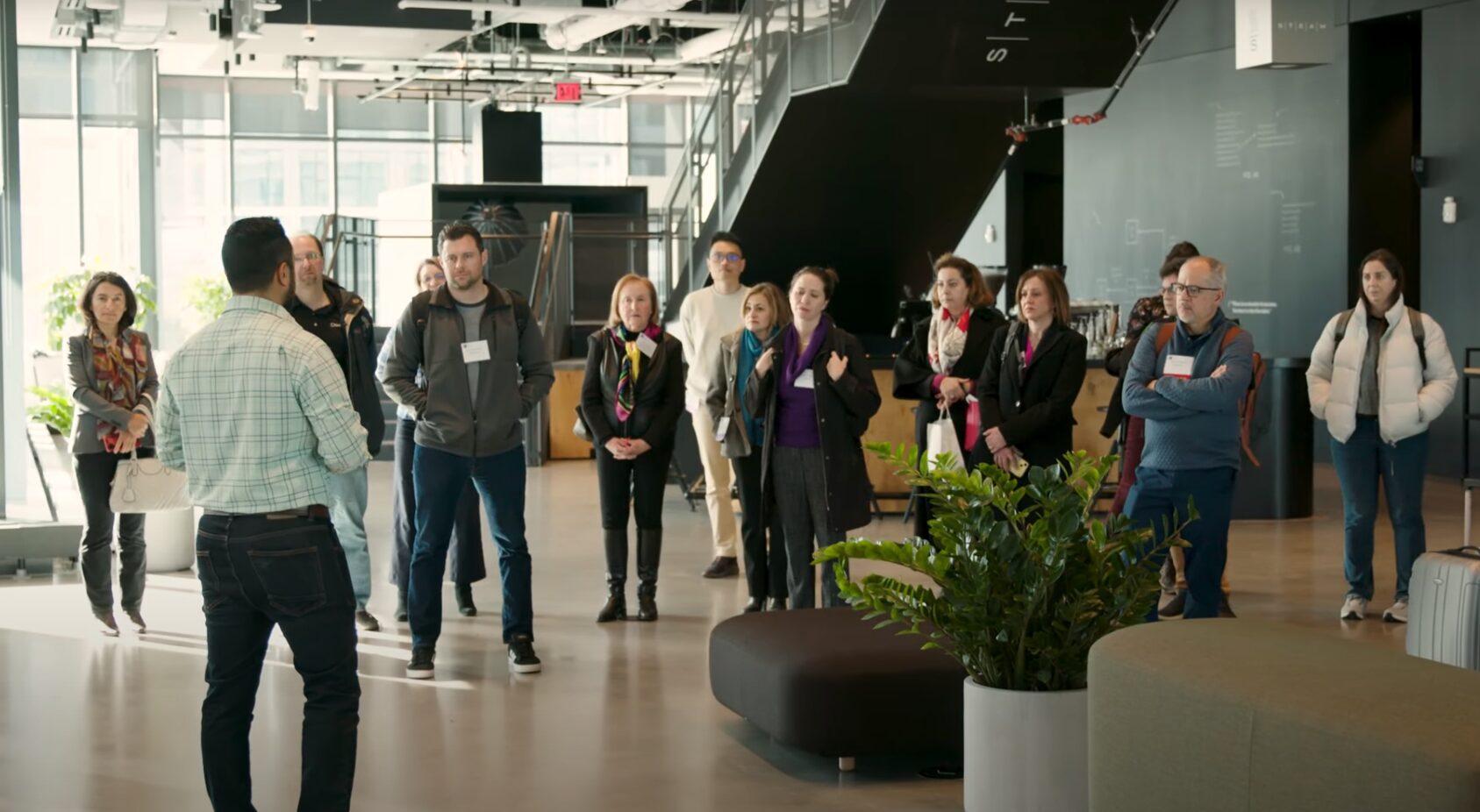Do a quick test. Close your eyes and try to find the front door. Now open that door, walk to the corner and then go to the subway or a department store. The task is even more complicated when you’re in a place where doors move when sensors are tripped or walkways are blocked without warning. Millions of people who are blind deal with these challenges every day, and 30 percent are too afraid to go out alone.
London-based Wayfindr is creating standards for guidance technology that could change the world. Using beacons and mobile apps, the Wayfindr system relays verbal instructions to users via headphones. Environmental sound is utilized to navigate unfamiliar areas with up-to-the-second information.
“The future of Wayfinding is going to be a universal solution, and not just for blind people,” said Dr. Tom Pey chief executive of The Royal Society for Blind Children (RSBC). (Wayfindr is a partnership between RSBC and the company Ustwo.)
The technology will not only help people who are blind, but everyone. “Blind people are the extreme user case,” he adds, “but the technology will be used by everyone the same way we use GPS now.”
Using beacons and mobile apps, the Wayfindr system relays verbal instructions to users via headphones. Environmental sound is utilized to navigate unfamiliar areas with up-to-the-second information.
Wayfindr uses beacons placed inside buildings in combination with a phone app to create and relay its guidance. The indoor navigation market is a growing opportunity worth an estimated $40.99 billion by 2022, according to research firm MarketsandMarkets. From stores to hospitals, libraries to public events, beacon technology can help create better experiences and more efficient environments.
Early tests have already demonstrated Wayfindr’s effectiveness. Making a London underground station accessible requires about 30 to 50 beacons, at a cost of $5 to $30 per unit. (Underground stations can be as big as a soccer field.) The challenges are signal strength and accuracy. The more beacons you have, generally speaking, the better your coverage and accuracy will be.
“Beacons can be set up in a lot of different ways depending on how strong you want (or need) the signal to be,” said Tiernan Kenny, Head of Public Affairs for Wayfindr; “There are other considerations about placement that are important … say if you have wide open spaces versus smaller corridors you’re going to need more beacons.”
The Wayfindr beacon system also stands to benefit from the stronger connections created by future 5G networks. Pey is excited about those potential improvements. “5G will enable terrestrial-based, extremely accurate location and navigation systems that will give an enormous amount of information not just to the individual but also to the city and the authorities to better manage amenities,” he explained.
I encountered Wayfindr while studying how 5G networks can support accessibility, and immediately found their ideas compelling.
– Zachary Bastian, Manager of Strategic Alliances and Public Policy at Verizon
Wayfindr’s forward-thinking approach is also garnering interest from major telecommunication companies like Verizon. “I encountered Wayfindr while studying how 5G networks can support accessibility, and immediately found their ideas compelling,” said Zachary Bastian, Manager of Strategic Alliances and Public Policy at Verizon. “As we work to build our 5G network, Verizon is developing relationships with companies like them, intrigued by their use of mobile technology to support accessibility.”
Kenny believes 5G will usher in new experiences and options for everyone; “5G and open standards will have a transformational effect for more than just the visually impaired. From getting around in foreign cities to signs, the open standard we’ve been working on means a fragmented system is less likely. No one wants that.”
More than 1.3 billion worldwide people live with a visual impairment, a number set to triple by 2050 due to increased levels of diabetes and aging populations.
People who are blind aren’t the only group that technology like Wayfindr will help. Dementia sufferers – increasing by more than 10 million every year according to the World Health Organization – can use auditory reminders to recall things and complete tasks they may have forgotten they were doing.
The growing numbers of people with dementia and visual impairment mean solutions are necessary if we’re going to support millions challenged by age and genetics. Wayfindr and waves of new technologies enabled by 5G could mean these people can lead more independent lives. Beyond this, Pey is excited by the possibilities that 5G can offer humanity: “5G is going to be life-changing for all of us, indoor and outdoor navigation is going to see huge changes and will be central to this.”
For additional resources, please visit the following:
For related media inquiries, please contact [email protected]
For more on the Fourth Industrial Revolution, please visit this page.





